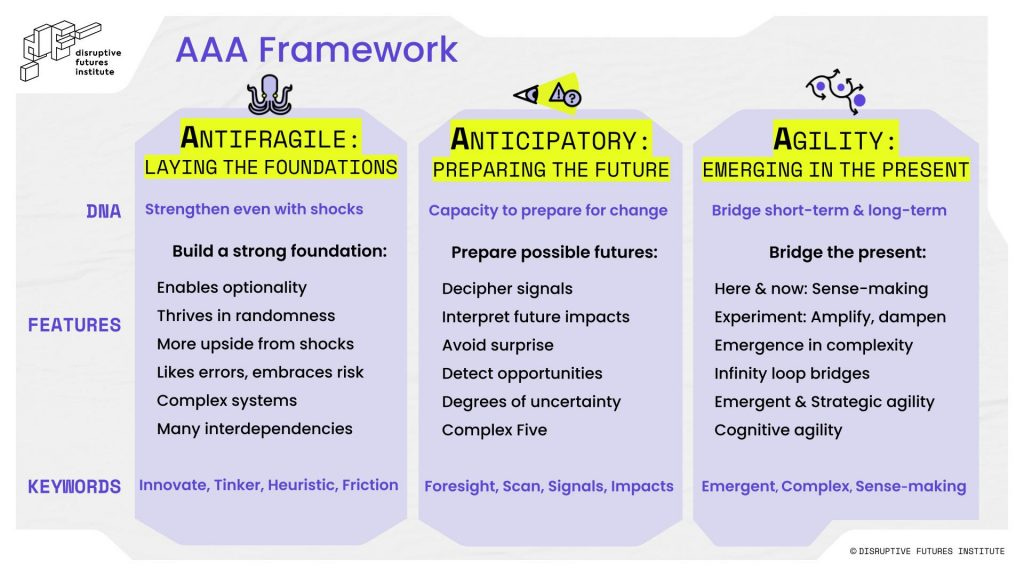20250323
“Indigenous communities in the Amazon are using AI technology, specifically a chatbot named Tainá, to preserve and share their cultural knowledge. Developed by the Inhaã-bé community in Manaus with the help of GainForest, Tainá stores traditional wisdom and allows users to ask questions in multiple languages.” - through Atmos
People: Healthy cities. The vibes method. Raw awe. Madman theory. American mobility is slowing down. Rethinking football clubs cultures.
Tech: US Weather forecasts could suffer. Interview about security with CISA. Obsolescence of exoskeletons. FAA and Starlink. Amazon to invest more in AI.
Business: AAA Framework–Antifragile, Anticipatory and Agility.
Life: Mind and matter. Measles.
Futures: Old scenarios where the US vanish. Game design to futures.
AEC: some trends and more, for digital, for BIM (x2, and 3), and some more.
AI: Neutralizing call center’s staff accents. Indiana Jones prompts for jailbreaks. AI to prescribe drugs (or not).
Clean data and librarians. Agentic business objects. AI aesthetics politics. AI generated research. Vatican take on human/artificial intelligences. Local chatbots for local knowledge. And the Pentagon. And CocaCola.
AI and jobs/workplace. And fragmentation.

Connections Amidst the Silicon Skyline
In a not-so-distant reality, in a city humming with AI-generated optimism and beleaguered by the shadows of its tech-laden skyscrapers, there existed a peculiar course offered by the WHO—aptly named “How to Develop and Sustain a Healthy City in 20 Steps.” County officials undertook it religiously, their laptops glowing like oracles of sustainability^1. Apparently, gathering city officials was the new political sexy, or at least the kind of thing that might earn you a spiffy badge on LinkedIn.
Mira, a bright-eyed urban planner and part-time conspiracy enthusiast, found herself leading a team that was now adept at deploying Artificial Intelligence to manage everything from trash collection to predictive hurricane modeling. However, after multiple layoffs at NOAA stripped her team of seasoned storm whisperers, the reliability of such forecasts began to resemble Mira's afternoon espresso—fuzzy at best^2. "Don't worry," her intern chirped, paging through AI-generated research like it was a children's book. “All you need is big data! Big data solves everything!” Even she felt the absurdity of preaching the gospel of zeros and ones while ignoring the swath of resources being gutted.
Meanwhile, in her own community, an Indigenous leader named Tainá was harnessing the wisdom of an AI chatbot designed to mirror her peoples’ stories back to them. Reports flooded in from Brazil, where technology served as both anchor and lifeboat for cultural preservation^3. It was a melodramatic contrast to Mira’s struggle for authenticity amid the synthesized echoes of city initiatives.
What amused Mira was how politicians embraced “strategic fact reserves” that seemed more like secret vaults for misfit data: pick and choose only the useful nuggets while leaving the rest to wither, much like last week's salad in a forgotten fridge^4. She chuckled as she contemplated the origins of ART, the ‘Agentic Business Objects’ responsible for processing city invoices. She imagined them trumpeting, “We are not just passive data; we are alive!” She was beginning to picture how her spreadsheets might throw a raucous party—everything being audited by the specter of romantic Excel^5.
But then, like a sudden storm cloud, a new technology emerged from a conglomeration of protocols predominantly ruled by AI whims. Podunk Industries decided to invest a hefty chunk of change into voice-matching software for their underpaid call agents in India. The goal? To erase accents like artists manipulating a canvas, aiming for commercial perfection amidst a cacophony of cultural authenticity^6. “Isn't it delightful?” her colleague remarked, oblivious to the condescending veil of the initiative. “Robotics meets cultural homogenization!”^7
With the city on the verge of health metrics imploding and people in communities bereft of authentic interactions due to a tech-vexed culture, Mira slipped into her favorite café, stirring her coffee. It hit her suddenly—what struck her as absurd was actually the fringes of absurdity forming the core of unfiltered reality. Perhaps, she pondered, in a world where the line between human and AI blurred like her grandmother’s watercolor paintings, the true essence of a healthy city lay not in strident tech solutions, but in the art of connection, in rooting out the invasive weeds of isolation—whatever AI had come to deem as necessary.
As she prepared a pitch to integrate community storytelling back into city initiatives^8, Mira felt a surge of excitement. No, she wasn’t mad enough to think a chatbot could stir the heart of humanity, yet perhaps, amidst the predictive analytics and agentic systems, there lay a path to craft a city where laughter, love, and transcendent connections could exist—bizarrely and beautifully—side by side with the steel and silicon^9.
And who knows? Maybe they’d even earn a badge along the way.
---
^1 They also used lots of bright colors in their PowerPoint.
^2 Meanwhile, meteorologists were placing bets on the next hurricane hitting New Orleans—should we really trust AI to understand wind patterns?
^3 Asked Siri how to brew herbal tea, got an eloquent history on plant curing.
^4 A Black Mirror episode waiting to happen, obviously.
^5 Imagine accounting software hosting karaoke nights—why not?
^6 “Hello! Thank you for calling Teleperformance where accents go to be ‘improved.’”
^7 A new Instagram filter?
^8 She did wonder if her own audio reports should come with an accent disclaimer.
^9 A lot like America, really—diverse, bewildering, yet somehow still managing to function.

